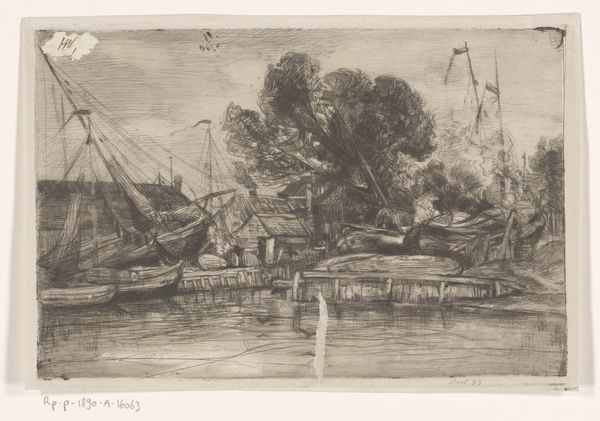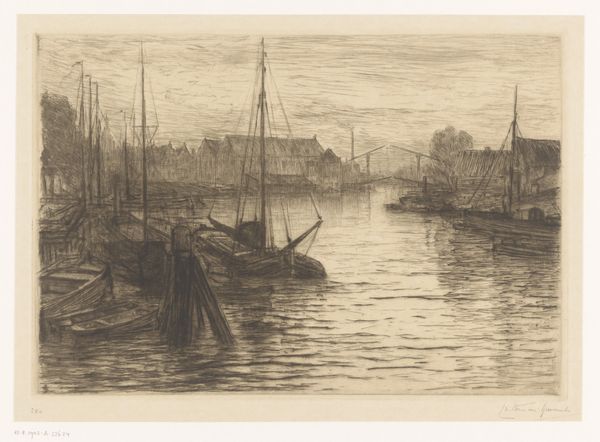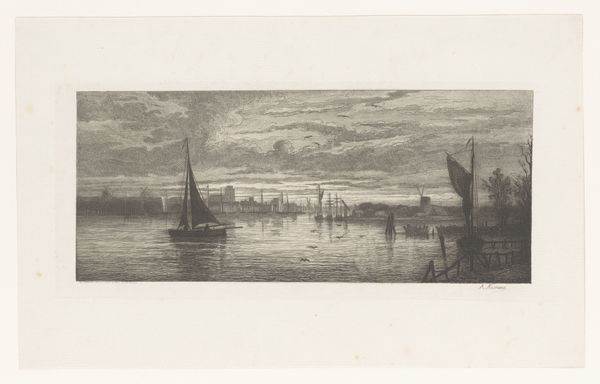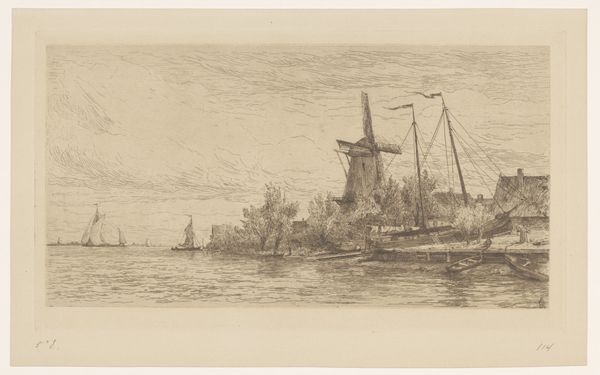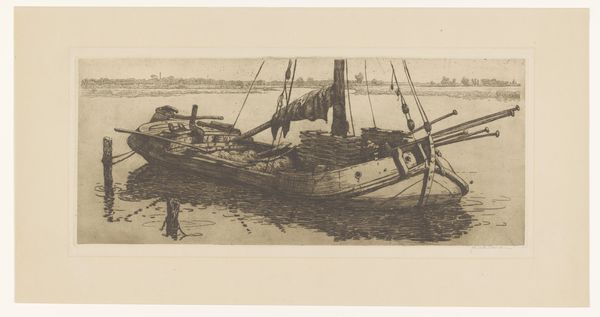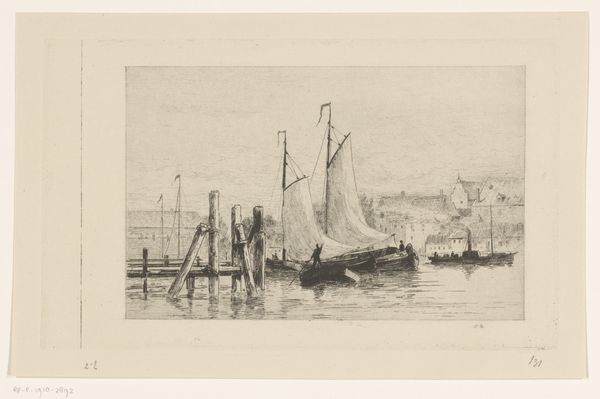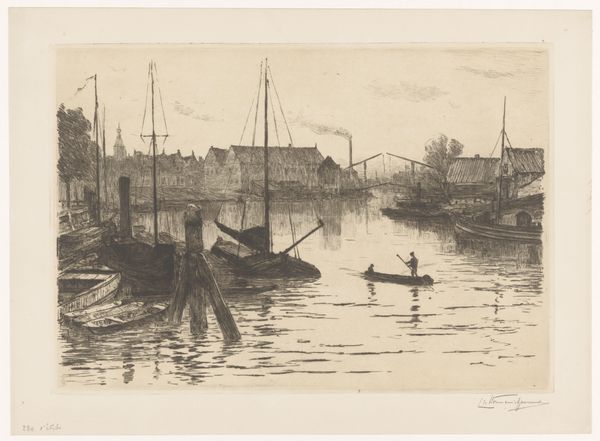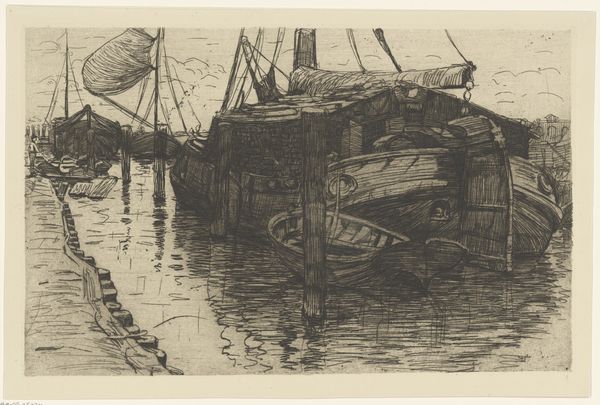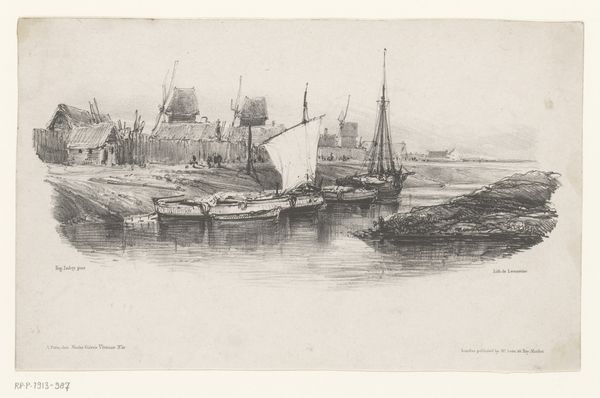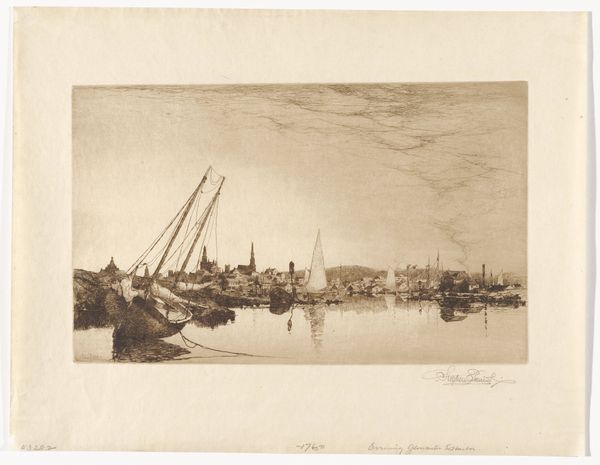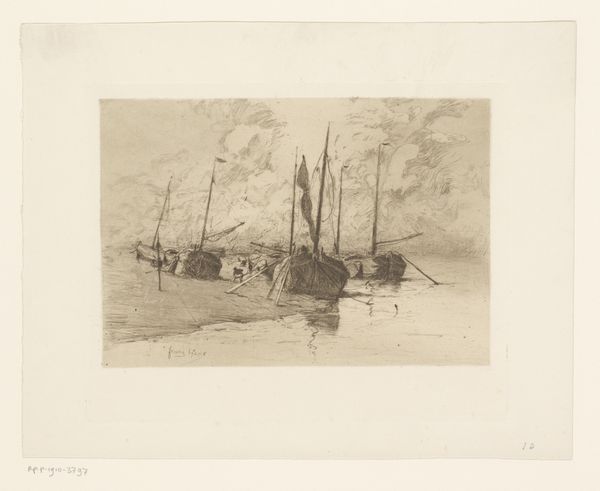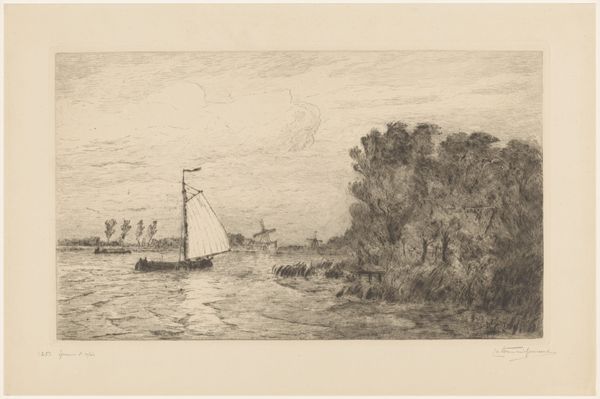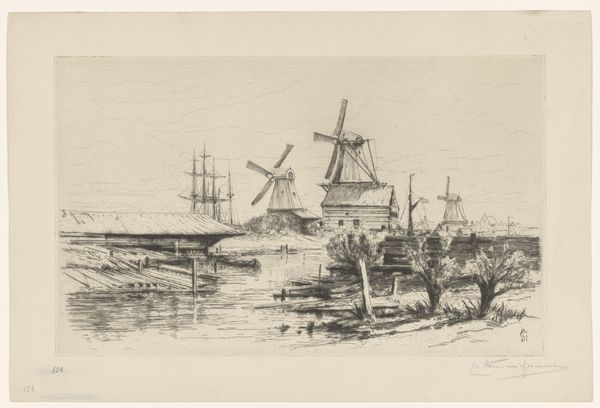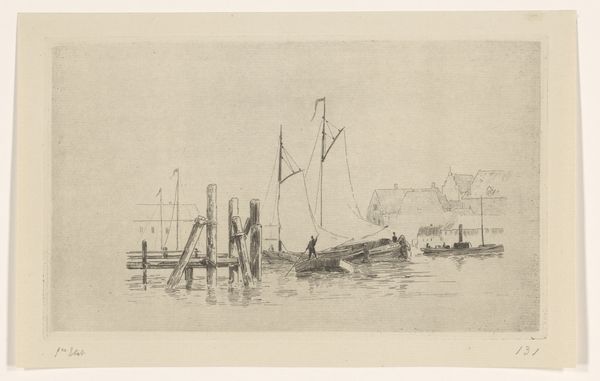
print, etching
#
16_19th-century
# print
#
etching
#
landscape
#
realism
Dimensions: height 197 mm, width 295 mm
Copyright: Rijks Museum: Open Domain
Curator: Henri Wouters' "Scheepswerf", or "Shipyard," created sometime between 1876 and 1889. It's currently residing here at the Rijksmuseum. Editor: Well, immediately I'm struck by the atmosphere – there's almost a sense of looming drama, wouldn't you say? A brooding quality? It's rendered in meticulous lines, all this work going into representing wood and water. Curator: Exactly, and as an etching, it really is a beautiful demonstration of light and shadow, isn't it? What grabs me is how it almost romanticizes the everyday toil inherent in a working shipyard. It's realism, sure, but with a painterly soul, if you follow. Editor: Oh, absolutely! It's tempting to overlook the inherent labor in its making; that’s key. Consider the physical exertion involved in the initial shipbuilding process that creates the composition in the image itself, alongside the labor of its meticulous etching! Then the labour in consuming the image – our viewing, and by whose leisure are we looking at the piece. Curator: The human element in crafting and using these boats almost whispers from within the shadows of the print. This interplay highlights that tension beautifully. These boats will likely only appear at museums when it represents a period of labor long behind. Editor: I see these almost gothic trees in the background – it feels heavy in industry. And think about the paper—it was likely hand-made at the time, further imbuing the piece with the marks of many hands. Curator: You’re pulling at all the connecting threads here between human actions and representations, aren’t you? That these etched lines were literally brought into being, reflecting that work! It’s like a memory etched in metal and ink. Editor: Precisely! That shipyard might be bustling, dormant, busy... the material is holding histories as the image itself might hold those of industry, class, and economy. Curator: So, next time you stand before "Scheepswerf," listen closely, will you? Maybe you too will catch the echoes of the shipyard—of lives intertwining. Editor: Indeed, consider also your labor in your perception: perhaps an engagement with its processes might allow us to think with the image anew, beyond its representation.
Comments
No comments
Be the first to comment and join the conversation on the ultimate creative platform.
